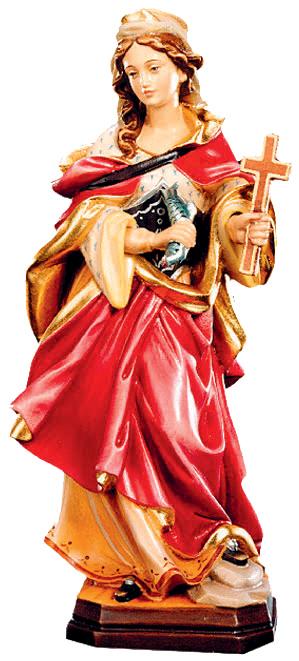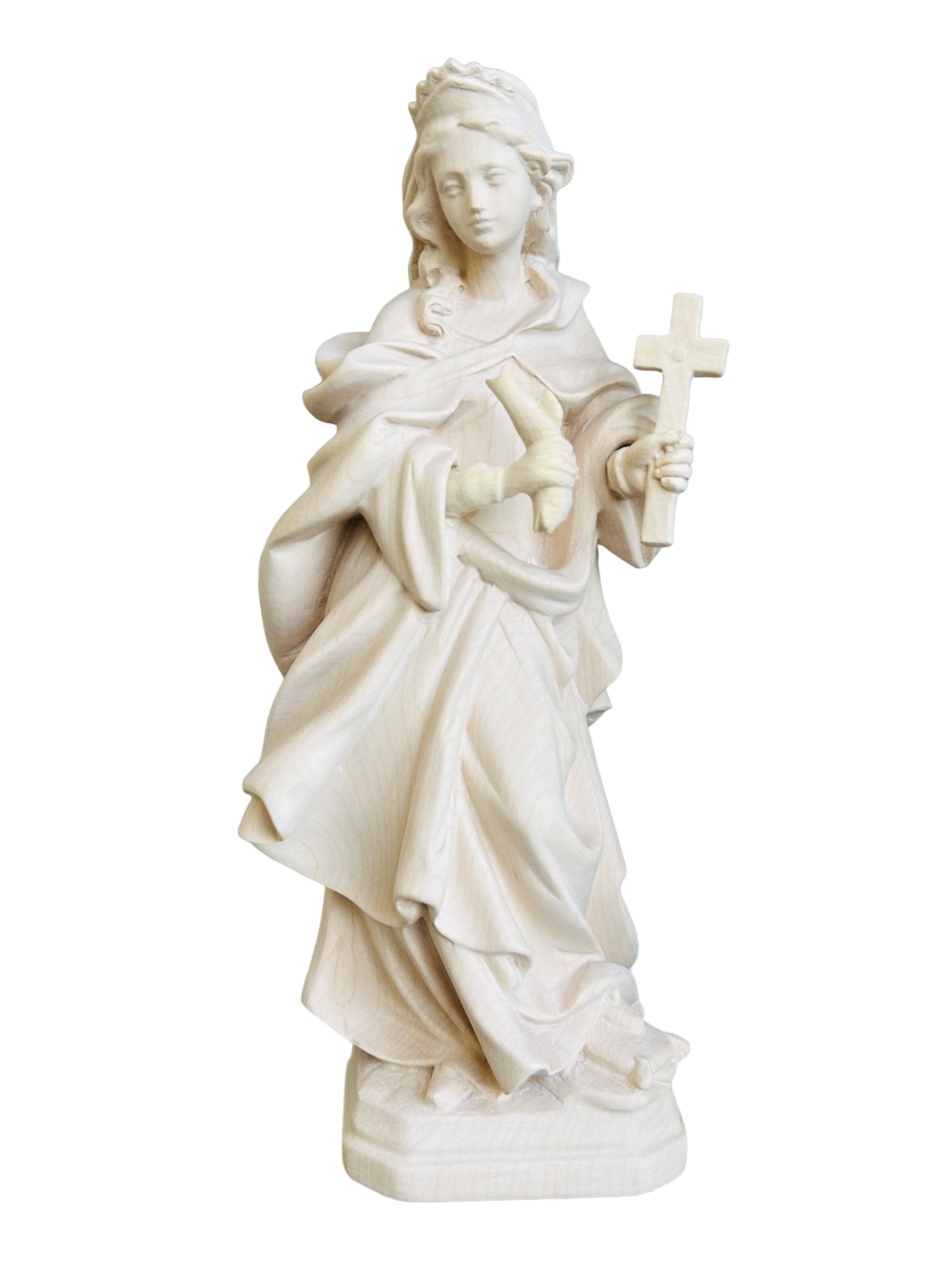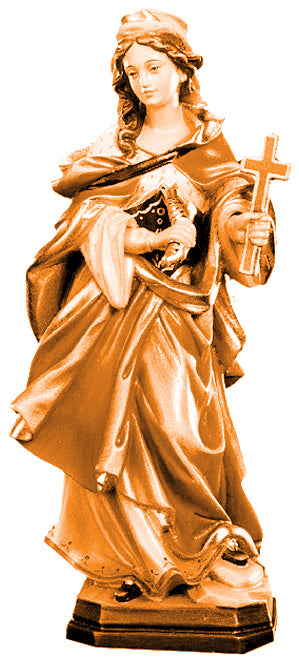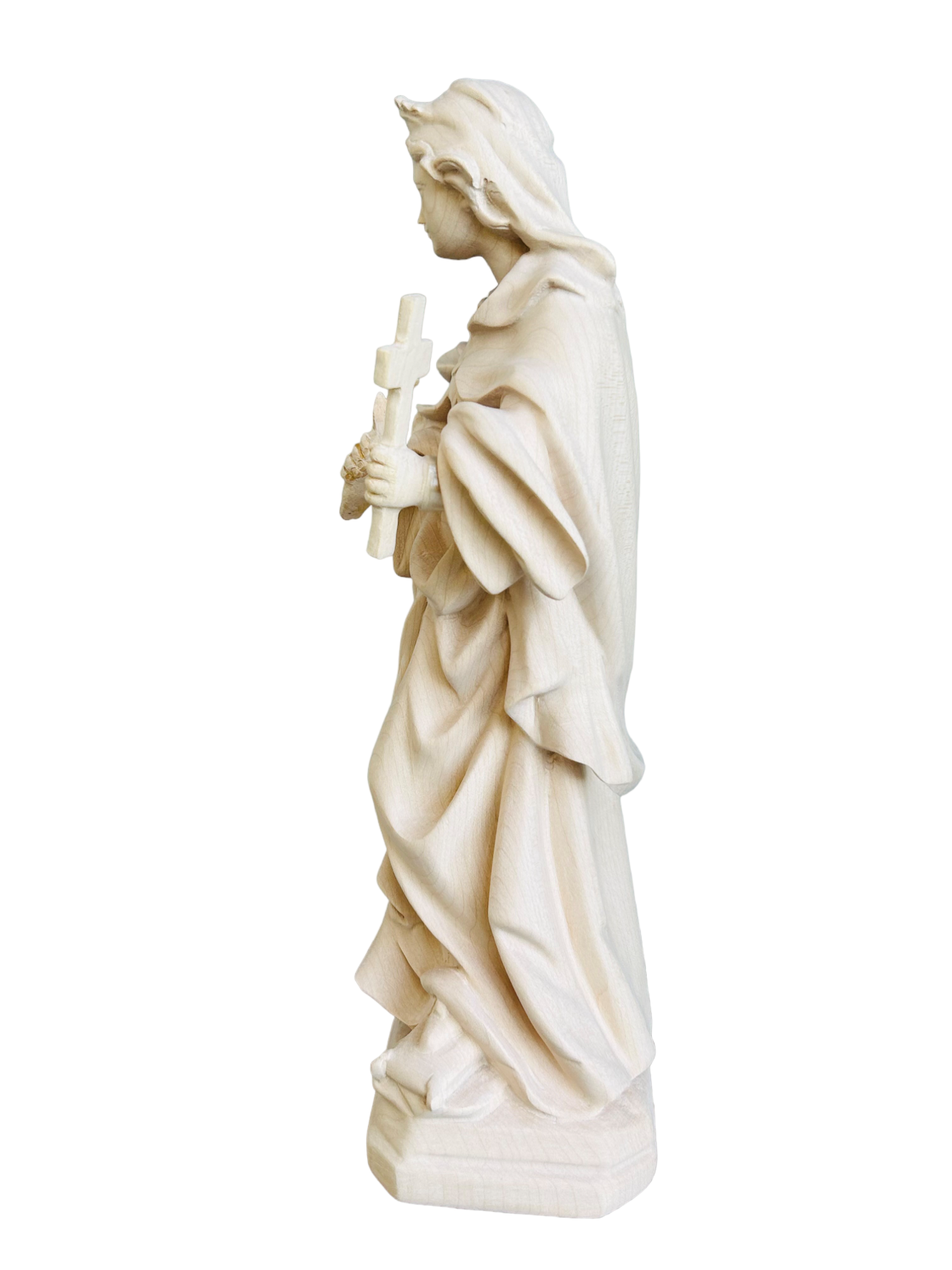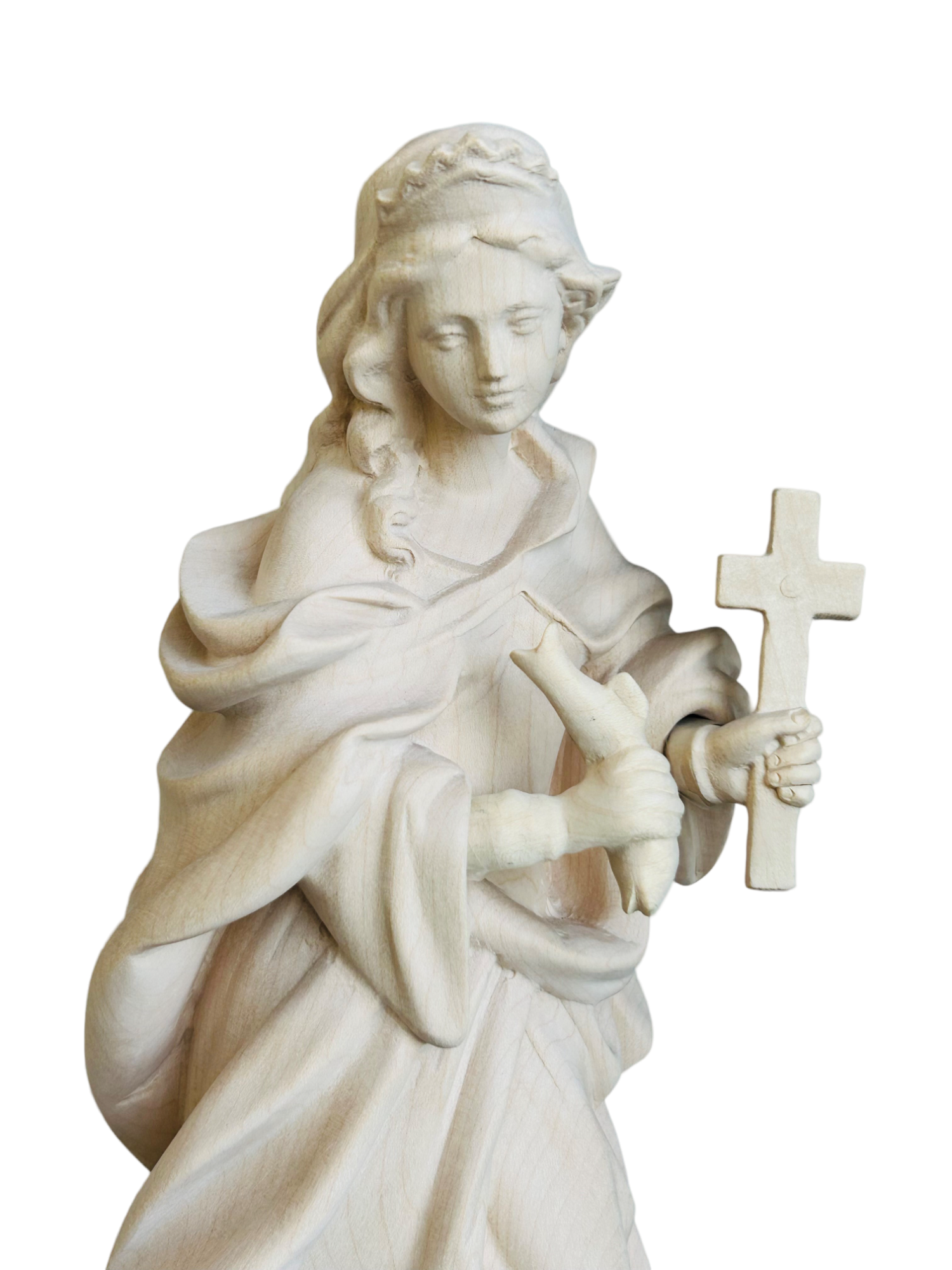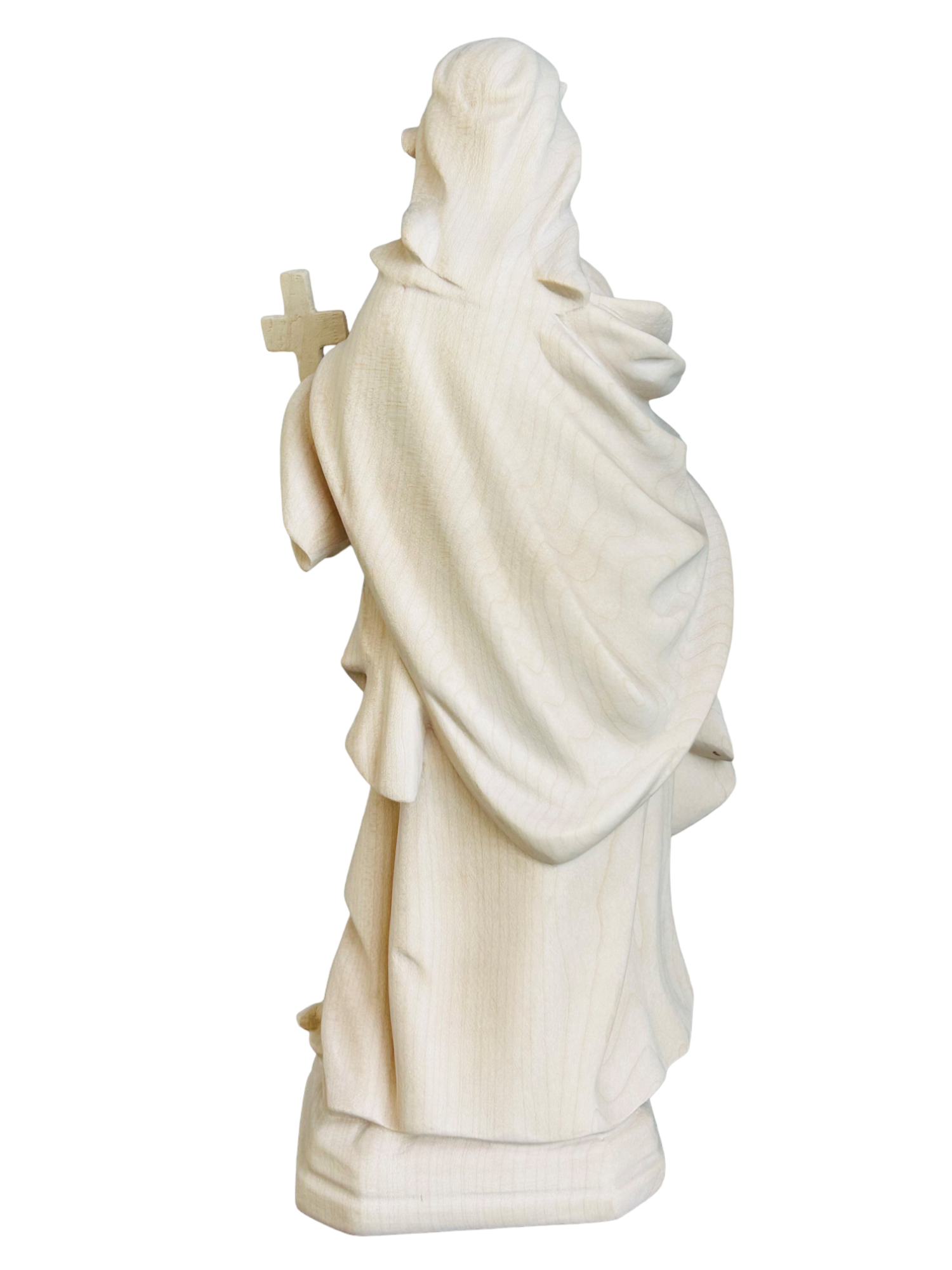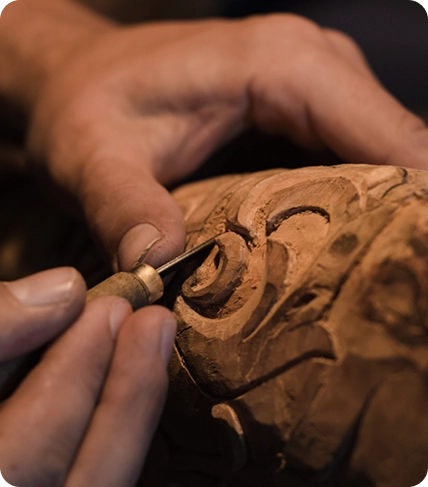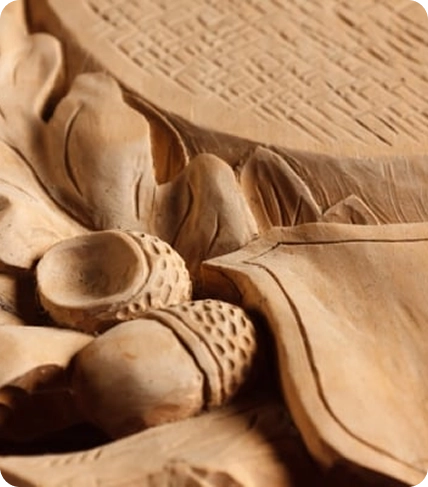St Margaret, also known as Marina, was the daughter of a pagan priest from Antioch in Pisidia. Her conversion to Christianity marked the beginning of a series of events that led to her becoming a shepherdess after being kicked out of the house by her father. Her beauty enchanted Olybrius, the prefect, who rejected her advances and accused her of being a Christian. Margaret was subjected to torture and imprisoned, where she faced the devil in the form of a dragon. Legend has it that the dragon swallowed her, but was forced to vomit her up by the cross she was clutching, irritating his throat.
Despite attempts to execute her by fire and drowning, Margaret miraculously saved herself, converting thousands of onlookers to her ordeal, who were then executed. Eventually, she was beheaded. Her story, although adorned with fictitious embroidery, became immensely popular in the Middle Ages, spreading from the East to all of Western Europe.
St Margaret is celebrated on 20 July and is said to have promised powerful indulgences to those who remember her life or invoke her help. She is one of the fourteen holy helpers, and one of the voices that inspired Joan of Arc.
Now, as you admire the statue of St Margaret, you can almost feel her story of courage and faith resonating through the centuries, a powerful reminder of the power of resilience and spirituality. A work of art not just to adorn a space, but to inspire the heart.






